Low female slaughter rate bodes well for supply uptick
Key points
- The female slaughter rate (FSR) is the lead indicator of a herd rebuild and is at its lowest level since Q4 2011.
- The correlation between the EYCI reaching new highs and a low FSR are strong.
- Historical performance of the FSR demonstrates the capacity for the herd rebuild to deliver significant upticks in supply.
The female slaughter rate (FSR) is a technical indicator of whether the national cattle herd is operating in a liquidation or rebuilding stage. The FSR tracks the number of female cattle killed compared with the total as a percentage.
At present, the FSR for Q1 2022 is operating at 41% – meaning 41% of the total number of cattle killed in Q1 2022 were female.
This is the lowest this indicator has been since Q4 2011, when the nation’s last La Niña occurred and the Eastern Young Cattle Indicator (EYCI) broke a new record, reaching 428¢/kg cwt.
Fast forward from Q4 2011 to Q1 2022 and the same situation has occurred, with the EYCI hitting 1,191¢/kg cwt on 24 January this year while the FSR reached its lowest level in a decade during this same quarter.
The correlation between a low FSR and a record high EYCI is driven by the strong seasonal conditions of a La Niña, which lifts the confidence of buyers. This confidence can be seen in the relationship between the two indicators of herd rebuild performance and restocker confidence in the market to purchase cattle.
Herd increases
In 2011, with an FSR that averaged 43%, the national herd grew by 7.4% or 1.95 million head. Historical evidence of herd changes on the back of low female slaughter rates demonstrates the capacity for the national herd to rebuild quickly.
MLA’s current projections forecast a herd increase of 4.7% or 1.1 million head in 2022. Since Q1 2021, the FSR has averaged 44% – a similar rate to that seen during 2011. Those females retained and joined in 2021 can be expected to deliver a large supply of cattle to market in 2023 as the calf drops of autumn and spring 2021 enter the market at slaughter weights.
Read MLA’s February 2022 cattle projections here.
Looking ahead
In the short term, many cattle regions have seen strong rainfall performance during Q1 and are looking forward to a forecast negative IOD and a favourable three-month outlook. The confidence in the cattle industry is expected to continue to reflect favourable price performance for the short term.
Additionally, if the FSR continues to remain close to 40% for the remainder of 2022, industry can expect the national herd rebuild and supply to increase significantly following the high retention of females in 2023 and beyond.



